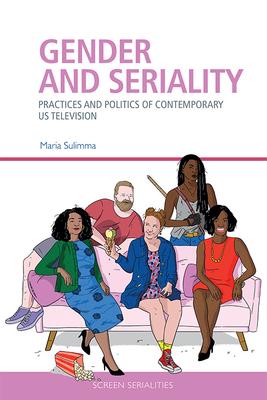The notion of seriality and serial identity performance runs as a strong undercurrent through much of the fields of gender studies, feminist theory and queer studies, although the explicit analysis of a serial enactment of gender is surprisingly rare. Whereas media studies and cultural studies-based seriality scholarship can often overlook gender as an ongoing process, this book defines gender as a serial and discursively produced, intersectional entanglement of different practices and agencies. It argues that serial storytelling offers such complex negotiations of identity that it is never adequate to consider the ’results’ of televisual gender performances as separate from the processes that produce them. As such, gender performances are not restricted to individual television programmes themselves, but are also located in official paratexts, such as making-of documentaries, interviews with writers and actors, as well as in cultural sites like online viewer discussions, recaps and fan fiction. With case studies of series such as Girls, How to Get Away With Murder and The Walking Dead, this book seeks to understand how gender as a practice is generated by television narratives in the overlapping of text, reception and production, and explores which viewer practices these narratives seek to trigger and draw on in the process.
| FindBook |
有 1 項符合
Gender and Seriality: Practices and Politics of Contemporary Us Television的圖書 |
 |
Gender and Seriality: Practices and Politics of Contemporary Us Television 作者:Sulimma 出版社:Edinburgh University Press 出版日期:2022-12-05 語言:英文 規格:平裝 / 264頁 / 普通級/ 初版 |
| 圖書館借閱 |
| 國家圖書館 | 全國圖書書目資訊網 | 國立公共資訊圖書館 | 電子書服務平台 | MetaCat 跨館整合查詢 |
| 臺北市立圖書館 | 新北市立圖書館 | 基隆市公共圖書館 | 桃園市立圖書館 | 新竹縣公共圖書館 |
| 苗栗縣立圖書館 | 臺中市立圖書館 | 彰化縣公共圖書館 | 南投縣文化局 | 雲林縣公共圖書館 |
| 嘉義縣圖書館 | 臺南市立圖書館 | 高雄市立圖書館 | 屏東縣公共圖書館 | 宜蘭縣公共圖書館 |
| 花蓮縣文化局 | 臺東縣文化處 |
|
|
圖書介紹 - 資料來源:博客來 評分:
圖書名稱:Gender and Seriality: Practices and Politics of Contemporary Us Television
|










